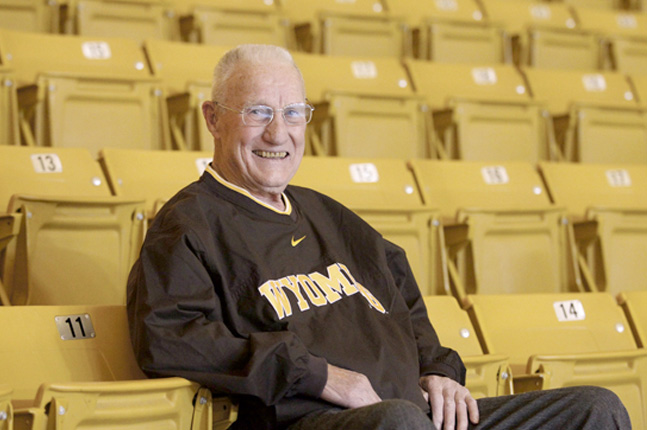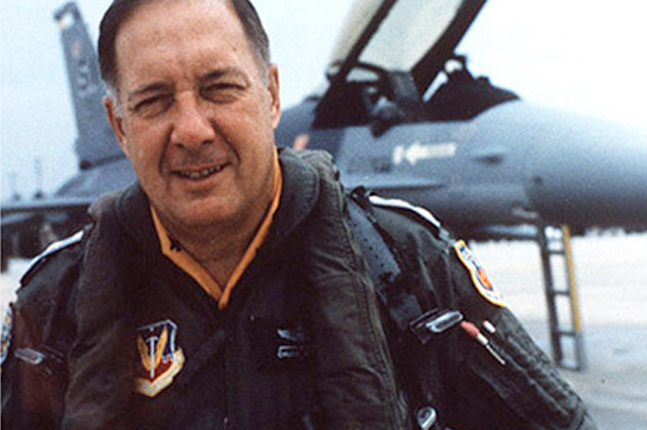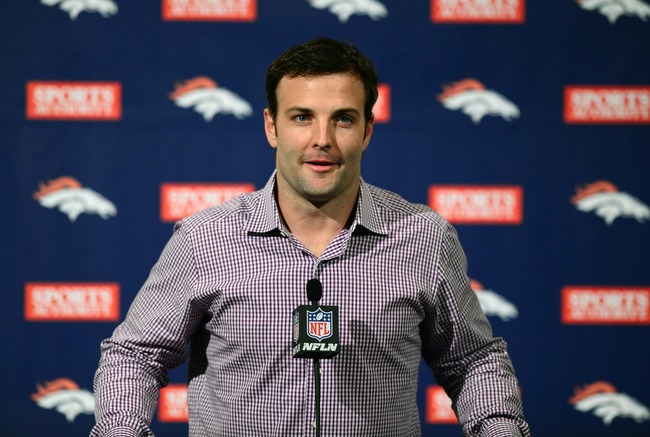Since the game of basketball was introduced in the late 1800s, it has made many transformations while developing into the game fans love to watch today.
Along the way, there have been many contributors and facilitators of change, including Kenny Sailors, a point guard for Wyoming’s 1943 NCAA championship team.
Sailors introduced the one-handed jumped shot — or the modern jump shot fans are accustomed to players using in today’s game — and then popularized and perfected it.
For Sailors, the one-handed jump shot was born out of necessity. While growing up on a small farm in Wyoming, Sailors’ brother Bud put a hoop on the windmill. Bud was five years older, and at 6-foot-5, towered over his younger sibling, who stood about 5-7 at the age of 13 before he reached his full height of 5-10.
“Every once in a while he would ask if I’d like to play a game of one-on-one, and kind of grin at me,” Sailors said. “He was a good ball player — he played for the high school team.”
Bud blocked shot after shot against the youngster, who finally got tired of the lopsided results and devised another way to compete.
“I got to thinking that if I could dribble up to him –- I was a pretty good dribbler -– and then just jump as high as I could in the air and shoot the ball that I may not make it but at least I would try,” Sailors said.
At the time, in the 1930s — jump shots were not the norm — two-handed set shots were.
“When it went in the first couple of times, my brother said, ‘Kenny, that’s a good shot … you have to develop that.’ I was clear up above him when I shot the ball.”
When Sailors was a freshman in high school, he went with some friends to watch the AAU Tournament in Denver, and a player by the name of Hank Luisetti from Stanford caught his eye. Luisetti, who led the NCAA in scoring in 1936 and ‘37, used a one-handed set shot.
“I liked the way he shot one-handed, so I started shooting one-handed,” Sailors said. “I never did try to shoot the two-handed shot.”
Adding a 36-inch vertical jump to the one-handed shot, along with superb dribbling skills, Sailors went on to become a consensus All-American in 1943, while helping the Cowboys to a 31-2 record and the NCAA title. He averaged 15.1 points per game during the championship season, including a 16-point performance in the Cowboys’ 46-34 victory against Georgetown in the NCAA title contest at Madison Square Garden. Sailors was named the Most Outstanding Player of the tournament.
“His ability to dribble through and around any type of defense was uncanny, just as was his electrifying one-handed shot,” Louis Effrat of the New York Times wrote on March 31, 1943, referring Sailors’ performance in the Wyoming-Georgetown game.
Just weeks after the Cowboys took the trophy back to Laramie, Sailors entered the U.S. Marines, and served until the end of 1945, when he was honorably discharged with the rank of Captain.
While serving in the military, Sailors may have not had the means necessary to practice his jump shot, but he had plenty of time to think about how he wanted to develop it. When he returned from active duty, Sailors rejoined the Wyoming men’s basketball team for the 1946 season and implemented the adjustments he had made to the shot, and once again was named a consensus All-American.
A photo of Sailors’ perfected jump shot appeared in LIFE magazine on Jan. 21, 1946, from a game against Long Island University in Madison Square Garden.
“That was the best one,” Sailors said. “My feet are hanging straight down.”
After the conclusion of his college career, Sailors played professionally for five seasons before retiring to run a ranch for several years in western Wyoming. He and his wife Marilynne moved to Alaska in 1965, and established a successful guiding and outfitting business. They lived in Alaska for almost 35 years before returning to Wyoming.
Following his wife’s death in 2002, Sailors settled in Laramie, and has become a regular attendee at Wyoming sporting events and a sought-after speaker, and has been rediscovered by the media, giving countless interviews about his basketball career and life. After almost 70 years since the Cowboys won the NCAA title, he was inducted into the National Collegiate Basketball Hall of Fame in the Class of 2012.
Last year, Sailors attended the Final Four in New Orleans. It was only the second time he had attended the Final Four since playing in the event in 1943. Sailors also saw UNLV win the 1990 title in Denver. But, the 2012 version at the Superdome was quite impressive to Sailors who played before a crowd of just over 13,000 when the Cowboys won the championship.
“I’ve never seen that many people in a building before in my life,” Sailors said. “It was something else. It was quite a bit different than 1943.”
Now, at 92 years old, Sailors still enjoys watching basketball every chance he gets, and is happy to share his knowledge of the game with parents and children, especially about developing a jump shot.
“The first advice I would give is that you don’t want them starting a jump shot when they are too young,” Sailors said. “You need a lot of strength in your wrist and fingers to do it, and younger kids usually use the upper motion of their body to shoot the shot, which is entirely wrong.
“I tell them to get close to the basket –- three or four feet out –- and teach them to jump straight up and let their feet hang down for balance when they shoot. You don’t shoot it on the way up, you don’t shoot it on the way down … you have to take the shot right at the peak of your jump. It takes a little practice. It’s all wrists and fingers when you release it.”





